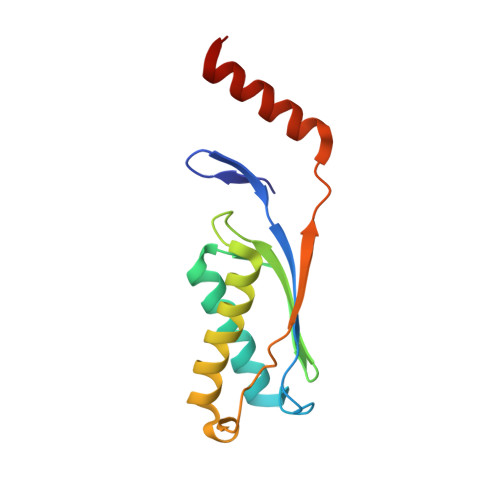Crystal Structure of a Metal Ion-bound IS200 Transposase
Lee, H.H., Yoon, J.Y., Kim, H.S., Kang, J.Y., Kim, K.H., Kim, D.J., Ha, J.Y., Mikami, B., Yoon, H.J., Suh, S.W.(2006) J Biol Chem 281: 4261-4266
- PubMed: 16340015
- DOI: https://doi.org/10.1074/jbc.M511567200
- Primary Citation of Related Structures:
2F4F, 2F5G - PubMed Abstract:
IS200 transposases, present in many bacteria and Archaea, appear to be distinct from other groups of transposases. To provide a structural basis for understanding the action of IS200 transposases, we have determined the crystal structure of the SSO1474 protein from Sulfolobus solfataricus, a member of the IS200 family, in both Mn(2+)-bound and Mn(2+)-free forms. Its monomer fold is distinct from other classes of structurally characterized transposases. Two monomers form a tight dimer by exchanging the C-terminal alpha-helix and by merging the two central beta-sheets into a large beta-sheet. Glu(55), His(62), and four water molecules provide the direct coordination sphere of the catalytically essential metal ion in the Mn(2+)-bound structure. His(16), Asp(59), and His(60) also play important roles in maintaining the metal binding site. The catalytic site is formed at the interface between monomers. The candidate nucleophile in the transposition mechanism, strictly conserved Tyr(121) coming from the other monomer, is turned away from the active site, suggesting that a conformational change is likely to occur during the catalytic cycle.
Organizational Affiliation:
Department of Chemistry, College of Natural Sciences, Seoul National University, Korea.















